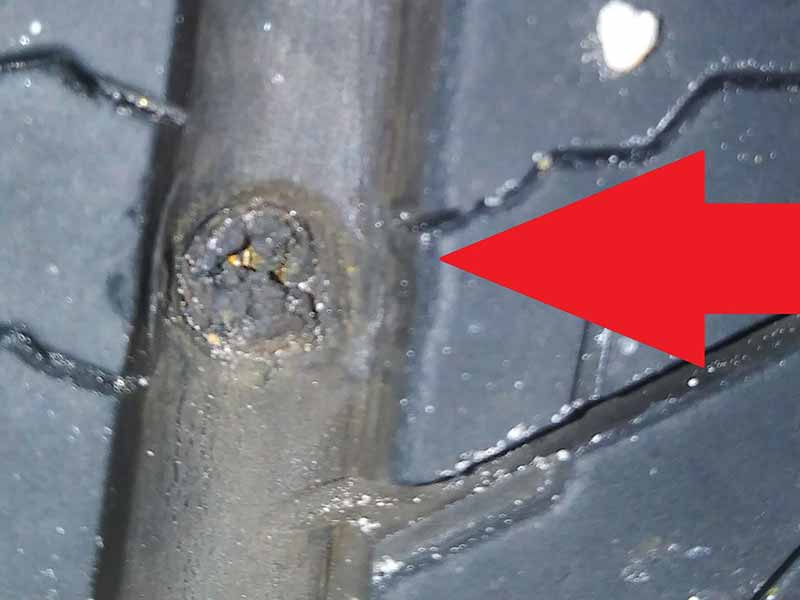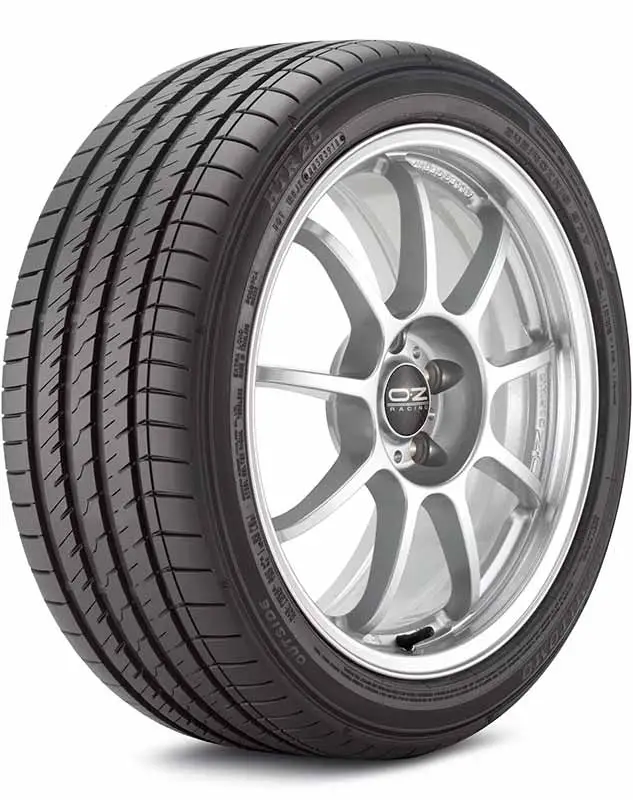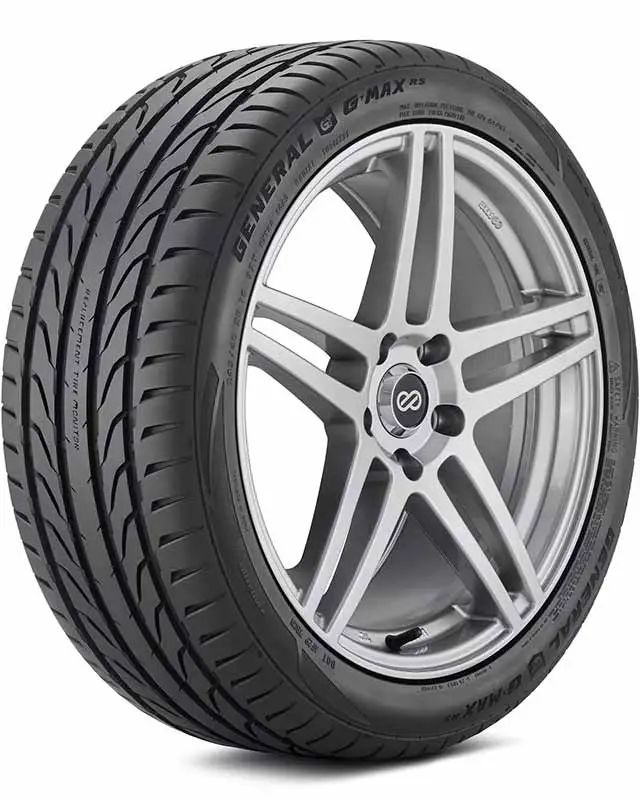Picture this: You’re cruising down the highway, minding your own business, when suddenly you hear that dreaded “thump-thump-thump” noise. Your tire has a puncture!
Luckily, there’s a solution that can help you get back on the road: the tire patch.
Is Patching A Tire Safe?
Patching a tire is generally considered safe when done correctly by a professional. However, it’s essential to monitor the patched tire’s condition and ensure it’s still in good overall shape for a secure and smooth driving experience.
In this article we’ll cover everything you need to know, from the difference between a tire patch and a plug, to how fast you can drive on a patched tire, and even when a tire simply can’t be patched. You’ll learn about the lifespan of a patched tire and if it’s at risk of a blowout.
Let’s take a closer look.
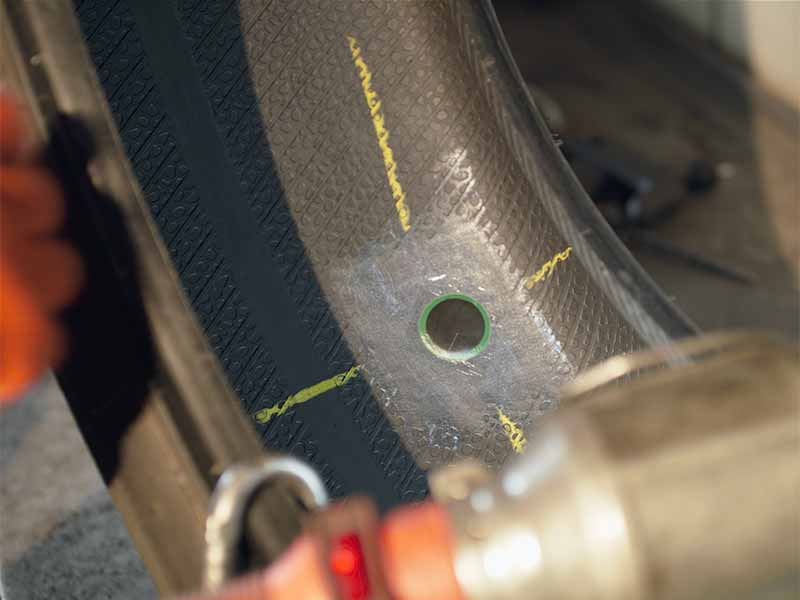
What Is A Tire Patch?
A tire patch is a special piece of rubber that’s designed to fix a small hole or puncture in a tire. Think of it as a super-strong band-aid for your tire. When you have a flat tire because of a nail or other sharp object, a tire patch can be a quick and effective solution to get you back on the road.
Now, you might wonder how a tire patch works. It’s actually pretty simple. The damaged area of the tire is first cleaned and prepped by a professional, making sure there are no loose bits or debris. Then, a special adhesive is applied to the tire patch. The patch is placed over the puncture and pressed firmly to create a tight seal. Once the adhesive dries, the tire is inflated back to its proper pressure, and you’re good to go!
Tire patches are made from durable materials that can handle the demands of the road. Most patches are a mix of rubber and fabric that helps create a strong bond with the tire. This way, you can trust your patched tire to be as reliable as possible. Just remember, tire patches are great for small punctures, but they’re not a one-size-fits-all solution. If your tire has a big gash or other serious damage, a patch might not be enough to fix the problem.
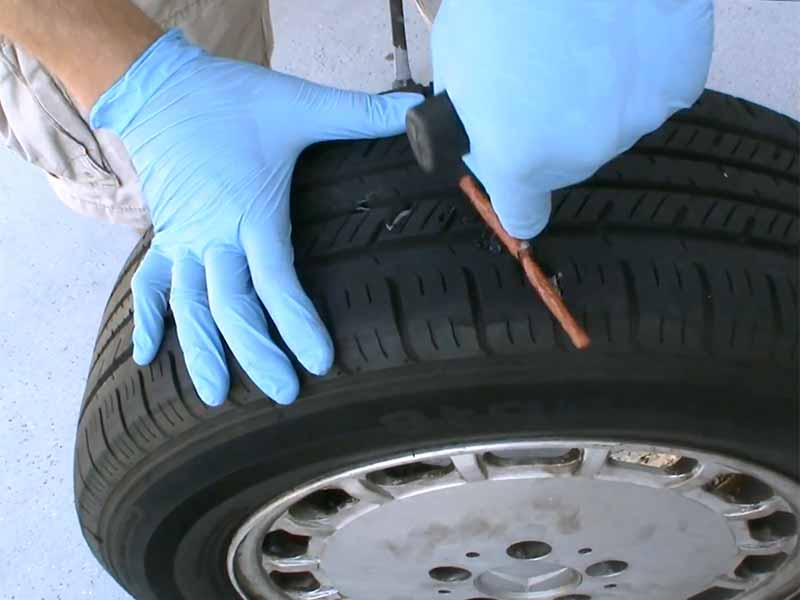
Tire Patch Vs Plug
As we know, tire patches are used to fix small punctures in the tire’s tread area. They create a strong, long-lasting seal and are usually the preferred choice when it comes to repairing a damaged tire. However, tire patches must be applied by a tire professional at a repair shop because the process requires special tools, skills, and adhesive to ensure a proper seal.
On the other hand, tire plugs can be a handy temporary fix when you’re stranded on the side of the road with a flat tire. A tire plug is a small, rubbery piece that’s used to fill the hole caused by a puncture. Unlike tire patches, tire plugs can be installed using a simple plug kit that you can keep in your trunk or glove box for emergencies. These kits typically include a reamer tool, a plug inserter tool, and a few tire plugs.
When you’re in a pinch, you can use the tire plug kit to fill the hole in the tire temporarily. The plug acts like a wedge, creating a seal that keeps air from escaping. While tire plugs might not be as durable as tire patches, they can help you get to the nearest repair shop where you can have a professional assess the damage and, if necessary, replace the plug with a tire patch.
So, to sum it up: tire patches are the more reliable and long-lasting repair option, but they require a visit to a professional. Tire plugs can be a helpful temporary fix when you’re on the go, but they should be replaced with a tire patch as soon as possible to ensure the best long-term safety and performance for your tires.
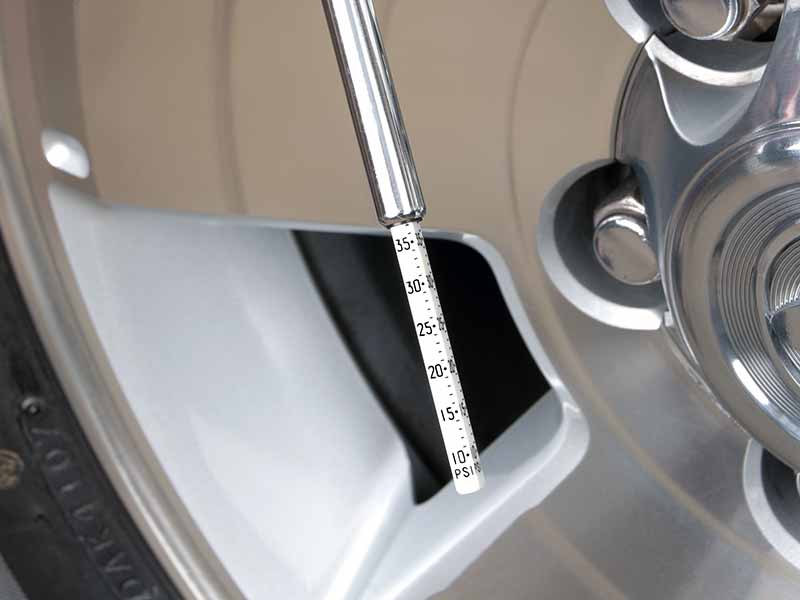
Can I Drive Long Distance With A Patched Tire?
The good news is that a properly patched tire can be pretty reliable, and you should be able to drive on it without too many worries. However, there are a few factors to consider before you hit the road.
First, it’s important to make sure the tire was patched by a professional who knows their stuff. A well-done patch will create a strong, airtight seal that can handle the demands of long-distance driving. If you’re unsure about the quality of the patch job, it’s a good idea to have it double-checked by another professional before heading out on a long trip.
Next, take a close look at the overall condition of your tire. A patched tire might be good to go, but if the tire is already worn or damaged in other ways, it might not be the best idea to rely on it for a long journey. Make sure there’s enough tread left, the sidewalls are in good shape, and there are no other issues that could cause trouble on the road.
Finally, remember that even a patched tire needs some TLC. Before your trip, make sure your tire pressure is just right, and check it regularly during your journey. Tires can lose air pressure over time, and this can be especially true for a patched tire. Keep an eye on the tire’s pressure and make any necessary adjustments to ensure a smooth and safe ride.
In summary, a professionally patched tire can be a reliable option for long-distance driving, as long as you pay attention to its overall condition and tire pressure. It’s always a good idea to consult with a tire expert if you have any doubts or concerns about your patched tire.
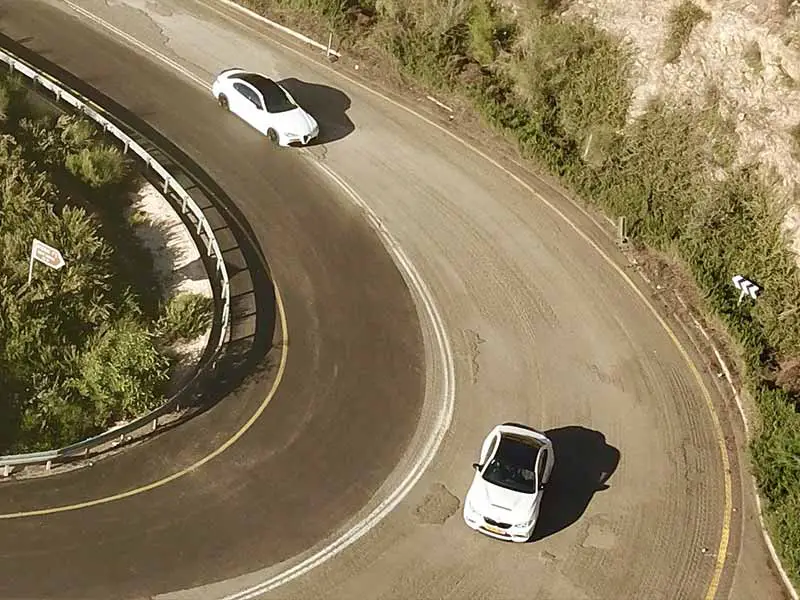
How Fast Can You Drive On A Patched Tire?
You might be wondering if there’s a specific speed limit you need to follow when driving on a patched tire. Well, the truth is, there’s no hard and fast rule for how fast you can go. However, it’s a good idea to take it a bit easy, especially at first.
After getting your tire patched, it’s wise to avoid speeding or sudden maneuvers that might put extra stress on the patched area. Give yourself and your tire some time to adjust to the repair. You could start by driving at a moderate speed, say around 50 to 55 miles per hour, and gradually increase your speed over time if the patch seems to be holding up well.
That being said, it’s crucial to remember that a patched tire isn’t brand new. The patch is there to help your tire function properly, but it might not perform quite as well as an undamaged tire. For that reason, it’s smart to be extra cautious on the road, leave a bit more space between you and other vehicles, and be prepared for the possibility of reduced handling or braking performance.
As always, the key is to stay vigilant and regularly inspect your patched tire. Keep an eye on the tire pressure and look for any signs of wear or damage around the patched area. If you notice anything unusual or have concerns about the safety of your patched tire, don’t hesitate to consult with a tire professional.
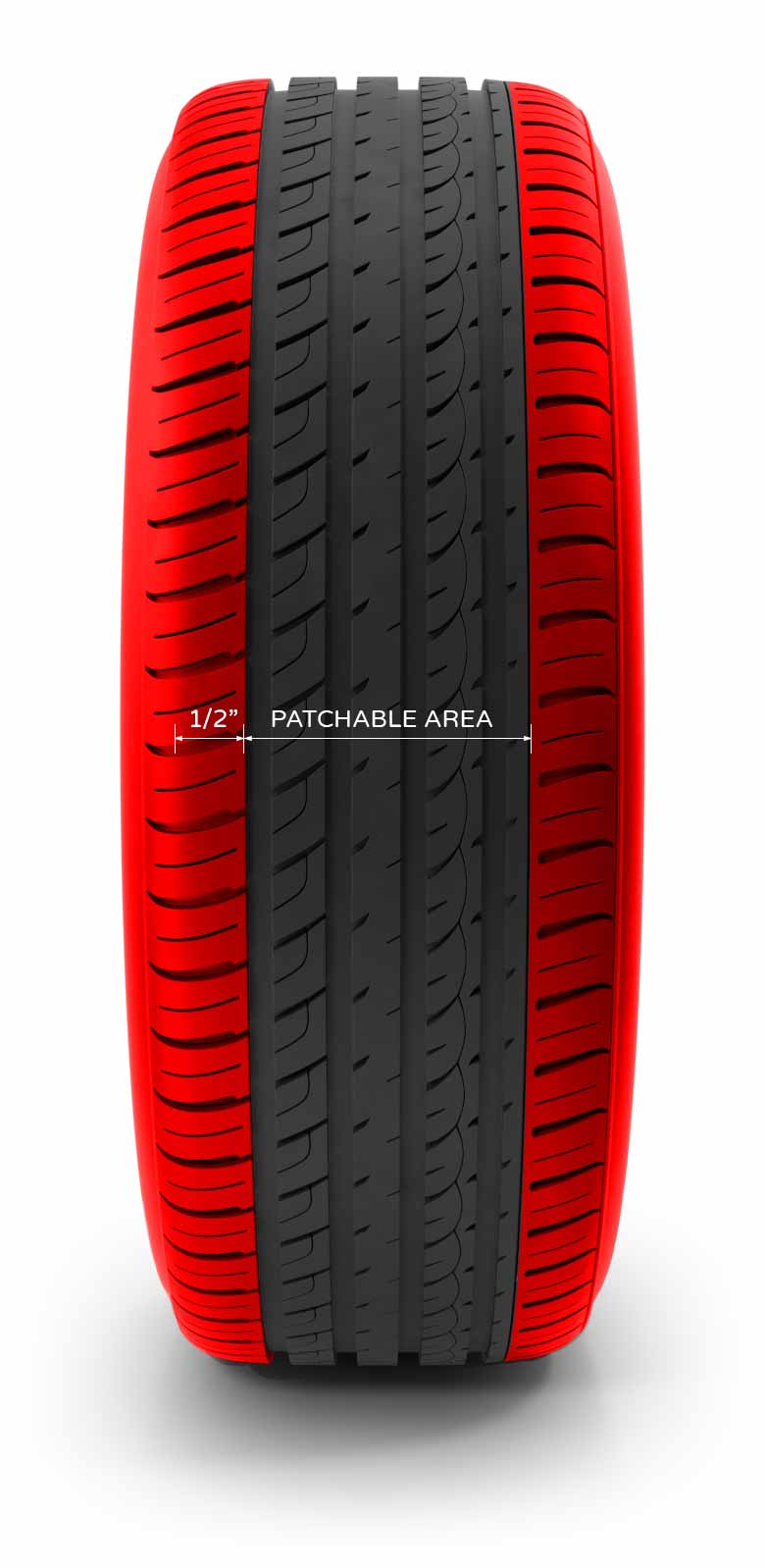
When Can A Tire Not Be Patched?
Even though tire patches can be a great solution for fixing small punctures, there are times when a tire can’t be safely patched. Let’s look at a few scenarios when patching just won’t cut it:
- Location Of The Puncture: Punctures in the sidewall or close to the edge of the tread can’t be patched reliably. In these cases, the tire’s structure is compromised, and a patch might not hold up under pressure. If a puncture is in one of these areas, it’s best to replace the tire instead.
- Size Of The Puncture: If the puncture is too large, a patch won’t be able to create a strong, airtight seal. Generally, if the hole is larger than 1/4 inch in diameter, it’s too big to be patched safely.
- Multiple Punctures: If a tire has more than one puncture or has been patched multiple times already, it might be time to retire that tire. Each puncture and patch weakens the tire’s overall structure, increasing the risk of a blowout or other issues.
- Damaged Beyond Repair: Sometimes, a tire can suffer damage that goes beyond a simple puncture. If there’s a large gash, significant sidewall damage, or the tire is badly worn or cracked, it’s best to replace it. Patching a tire in this condition won’t be enough to make it safe.
Remember, safety should always be the top priority when it comes to your tires. If you’re unsure whether your tire can be patched or needs to be replaced, consult with a tire professional. They’ll be able to assess the damage and help you make the right decision for the well-being of both your tires and your ride.
Patched Tire Lifespan
When you have a tire patched, you might be curious about how long that patch is going to last. A well-done patch by a professional can actually last quite a while, often for the remaining life of the tire. However, there are some factors that can impact the lifespan of a patched tire. Let’s take a look at a few of them:
- Quality Of The Patch Job: The better the patch job, the longer it’s likely to last. If a tire professional thoroughly cleans the damaged area, uses a high-quality patch and adhesive, and follows the proper procedure, the patch should hold up for a long time.
- Tire Condition: The overall condition of the tire is also a big factor. A patched tire that’s still in good shape, with plenty of tread left and no other damage, is more likely to have a longer lifespan than a patched tire that’s already worn out or has other issues.
- Driving Habits: How you drive can affect the lifespan of a patched tire. Aggressive driving, sharp turns, and hard braking can all put extra stress on the patched area, potentially shortening its life. To help your patched tire last, try to adopt a smoother, more cautious driving style.
- Tire Maintenance: Regularly maintaining your tires can also extend the life of a patched tire. Make sure to keep your tires properly inflated, have them rotated and balanced regularly, and check the alignment of your wheels.
While the lifespan of a patched tire can vary, if you take care of your tire and practice good driving habits, a well-done patch should last for the remaining life of the tire.
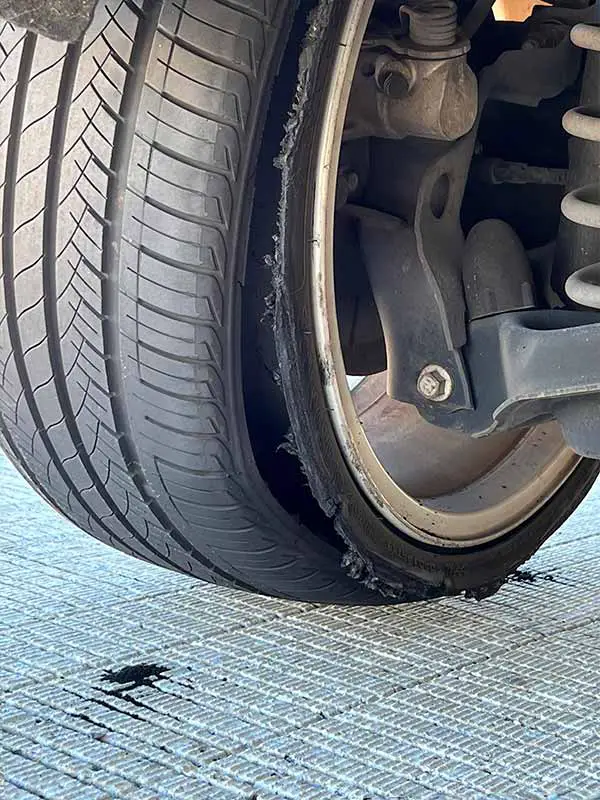
Can A Patched Tire Blowout?
In most cases, a well-done patch by a professional should not increase the risk of a blowout. A good patch forms a strong, airtight seal that can handle the demands of normal driving. However, there are some situations where a patched tire might be more susceptible to a blowout:
- Poorly done patch: If the patch job wasn’t done properly, it might not form a strong seal or could come loose over time. This could increase the risk of a blowout, especially at high speeds or under heavy loads.
- Patched tire in poor condition: A patched tire that’s already worn out or has other issues (like sidewall damage, low tread, or multiple patches) is more likely to experience a blowout. Make sure to check the overall condition of the tire and replace it if necessary.
- Overloading the vehicle: Overloading your vehicle can put extra stress on all of your tires, including the patched one. Be sure not to exceed your vehicle’s weight limits, as doing so can increase the risk of a blowout.
The key to minimizing the risk of a blowout on a patched tire is to ensure the patch was done by a professional and to properly maintain your tires. Regularly check your tire pressure, rotate and balance your tires, and inspect them for any signs of wear or damage.
Resources
Below are some links you may find helpful when learning about tires
Final Thoughts
In a nutshell, patching a tire can be a safe and effective way to fix a puncture and keep you rolling down the road. We’ve learned all about tire patches, how they compare to plugs, and when it’s best to opt for a professional patch. Remember that being cautious and aware of your patched tire’s condition is key to a smooth and secure ride.
So next time you find yourself with a punctured tire, don’t panic! Keep in mind what you’ve learned here, and you’ll be well-equipped to handle the situation confidently and safely.
Good luck and happy motoring.
